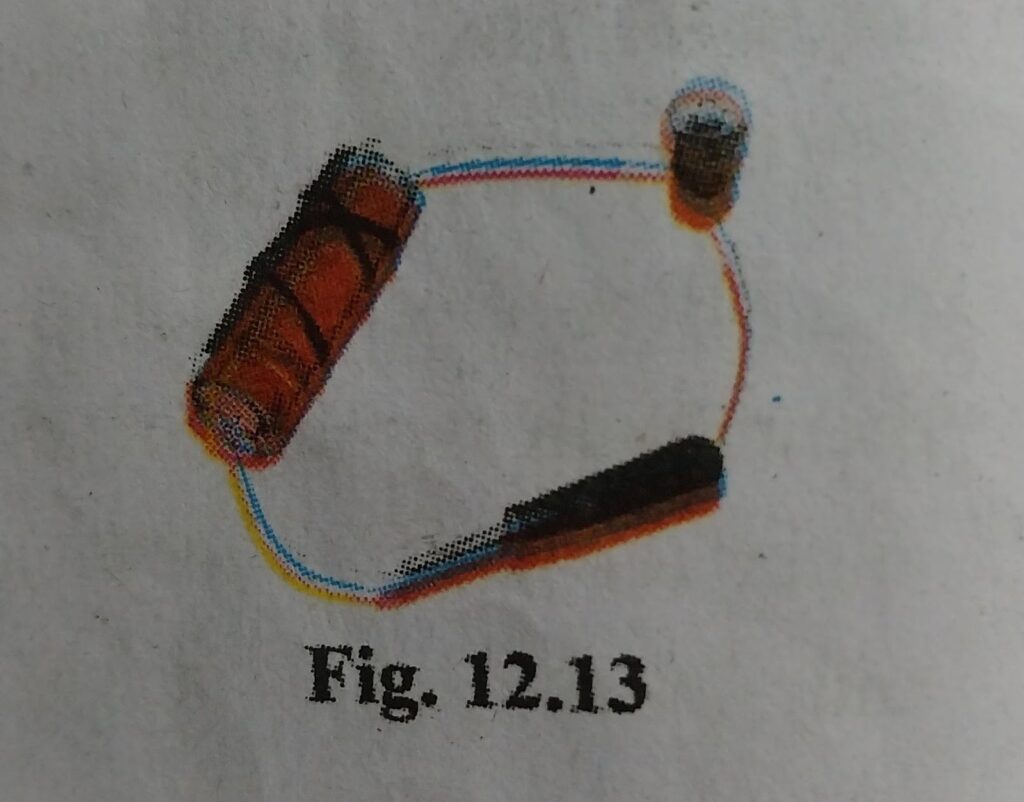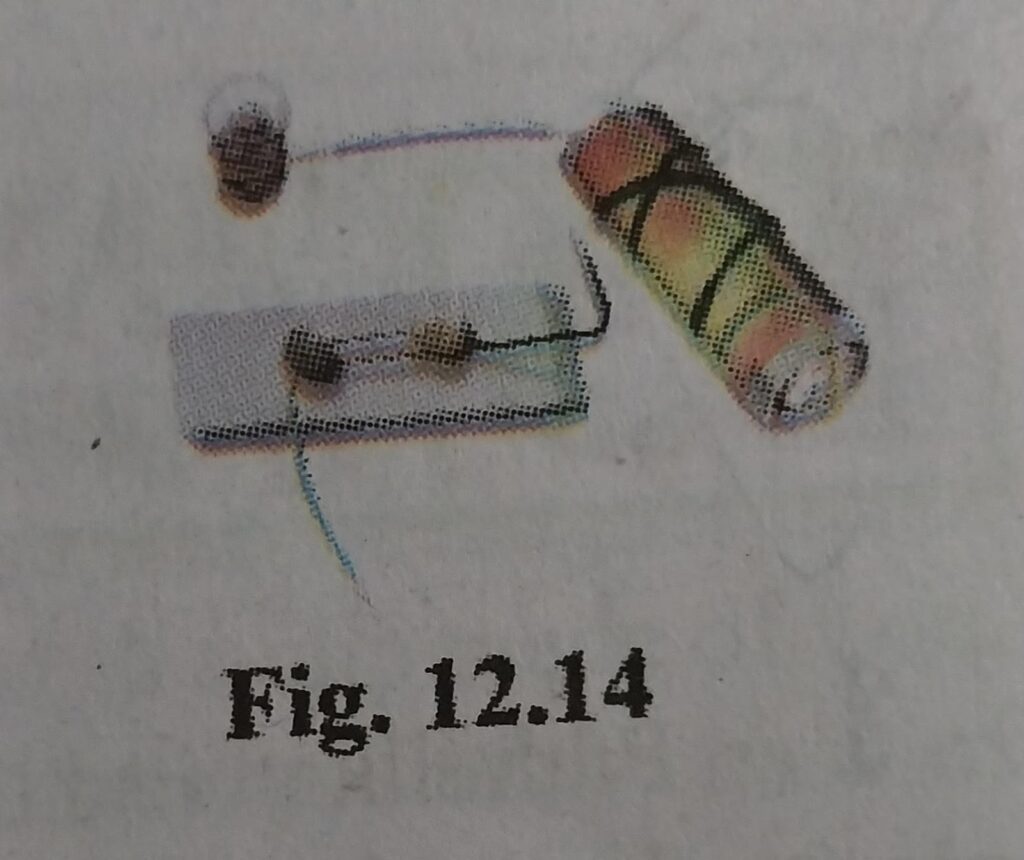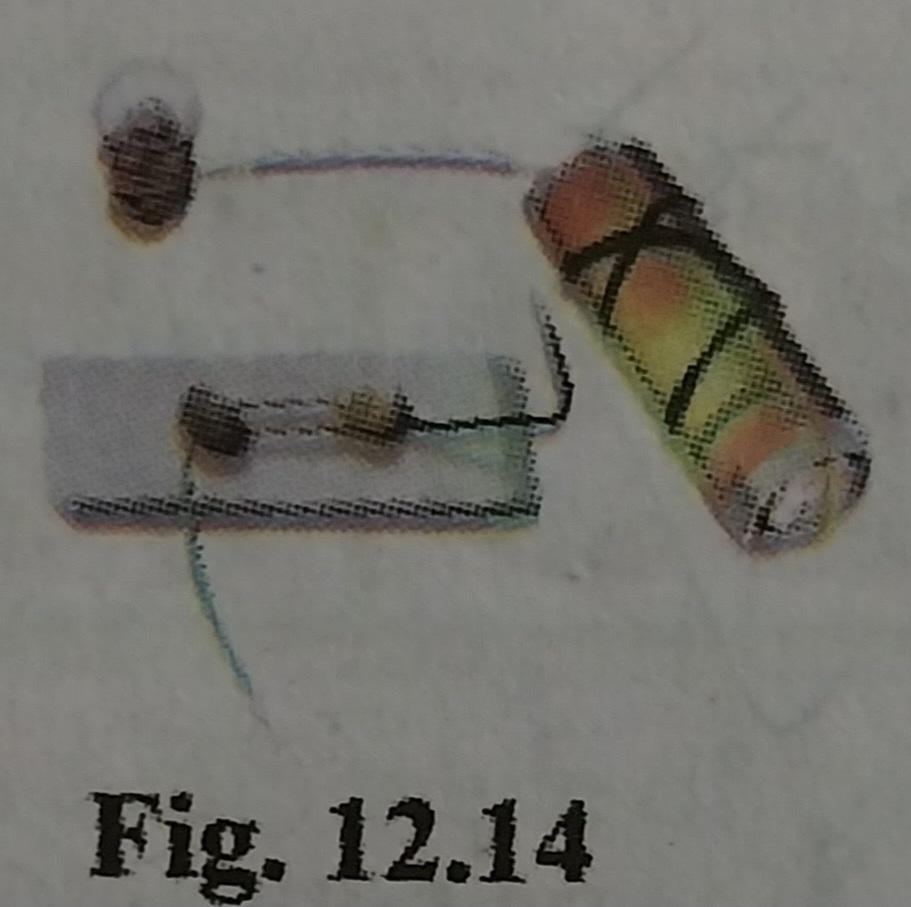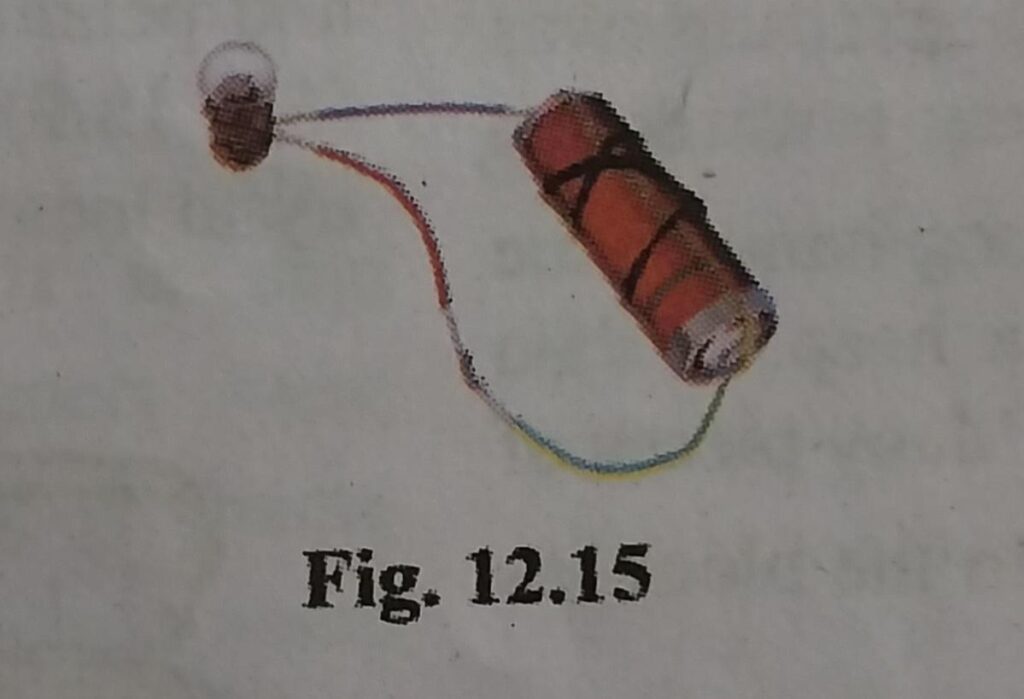Class 6 Science Chapter 12 Electricity and Circuits answer to each chapter is provided in the list so that you can easily browse throughout different chapter Assam Board As Per New Syllabus Class 6 Science Chapter 12 Electricity and Circuits and select needs one.
SEBA Class 6 Science Chapter 12 Electricity and Circuits
Also, you can read the SCERT book online in these sections Solutions by Expert Teachers as per SCERT (CBSE) Book guidelines. These solutions are part of SCERT All Subject Solutions. Here we have given Assam Class 6 Science Solutions for All Subject, You can practice these here.
Electricity and Circuits
Chapter: 12
| Exercise |
1. Fill in the Blanks:
(a) A device that used to break an electric circuit is called……………
Ans: Switch.
(b) An electric cell has ……………….. terminals.
Ans: Two.
2. Mark ‘True’ or ‘False’ for the following statements:
(a) Electric current can flow through metals.
Ans: True.
(b) Instead of metal wires, a jute string can be used to make a circuit.
Ans: False.
(c) Electric current can pass through a sheet of thermo Col.
Ans: False.
3. Explain why the bulb would not glow in the arrangement shown in Fig 12 .13.

Ans: The bulb would not glow in the arrangement because the circuit is not complete due to the presence of an insulator in the center.
4. Complete the drawing shown in Fig 12. 14 indicates where the free ends of the two wires should be joined to make the bulb glow.

Ans:

5. What is the purpose of using an electric switch? Name some electrical gadgets that have switches built into them.
Ans: The purpose of using an electric switch is to complete or break the circuit.
Some electrical gadgets that have switches built into them are: television, fans, refrigerator, electric cookers etc.
6. Would the bulb glow after completing the circuit shown in Fig 12.14 if instead of a safety pin we use an eraser?

Ans: No, the bulb does not glow.
7. Would the bulb glow in the circuit shown in Fig 12. 15?

Ans: No, the bulb does not glow in the circuit shown in Fig 12.15.
8. Using the “conduction tester” on an object it was found that the bulb begins to glow. Is this object a conductor or an insulator? Explain.
Ans: The object is a conductor because current will pass through the conduction tester and the bulb will glow. The bulb glows only when the conductor is used but not when the insulator is used.
9. Why should an electrician use rubber gloves while repairing an electric switch at your home? Explain.
Ans: An electrician uses rubber gloves while repairing an electric switch at our home because rubber gloves are used as insulators. This protects electricians from avoiding electric shocks.
10. The handles of the tools like screwdrivers and pliers used by electricians for repair work usually have plastic or rubber covers on them. Can you explain why?
Ans: The handles of the tools like screwdrivers and pliers used by electricians for repair work usually have plastic or rubber covers on them because rubber and plastic are a poor conductor of electricity. It does not allow current to pass through it. This protects them from electric shocks.

Hi, I’m Dev Kirtonia, Founder & CEO of Dev Library. A website that provides all SCERT, NCERT 3 to 12, and BA, B.com, B.Sc, and Computer Science with Post Graduate Notes & Suggestions, Novel, eBooks, Biography, Quotes, Study Materials, and more.



Very nice answers I like it.